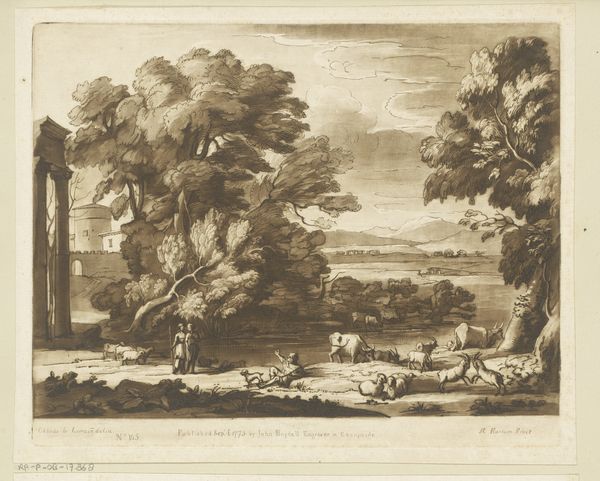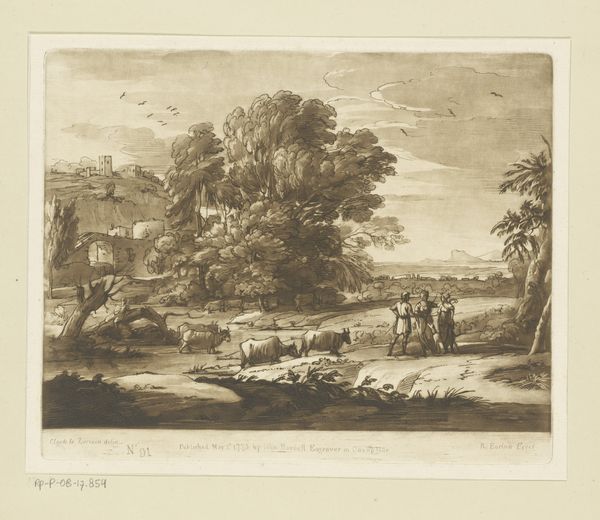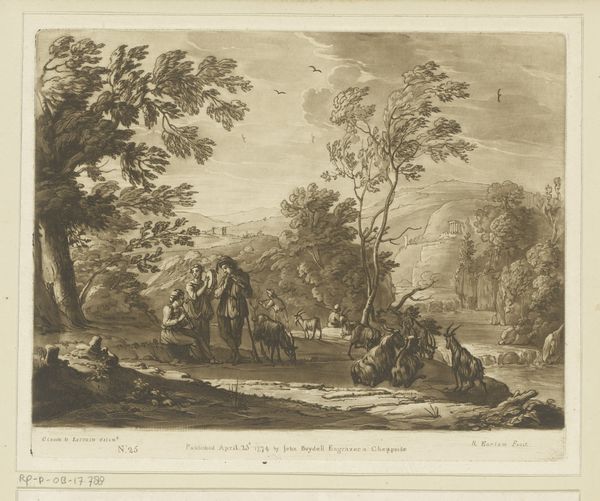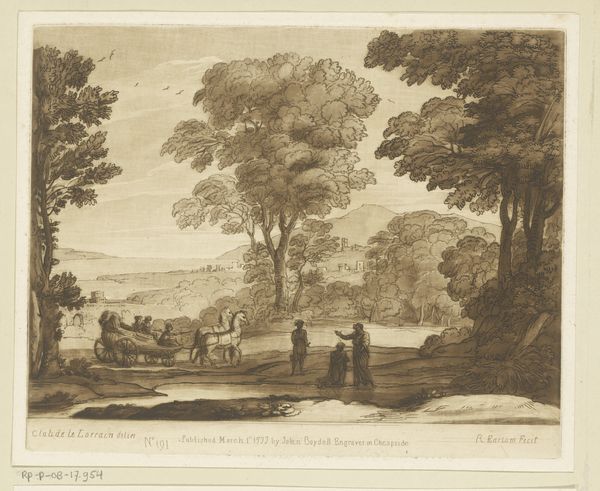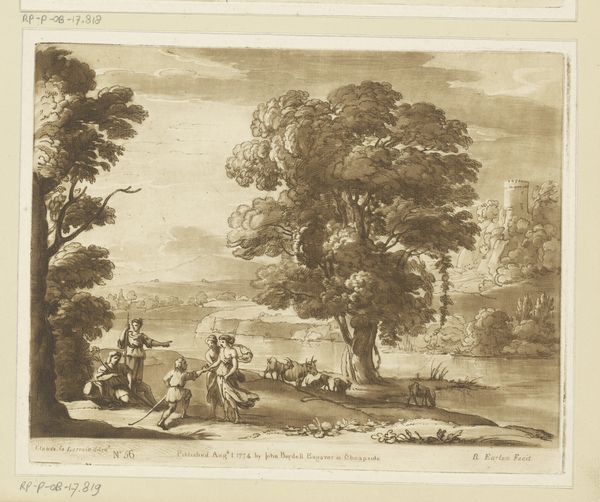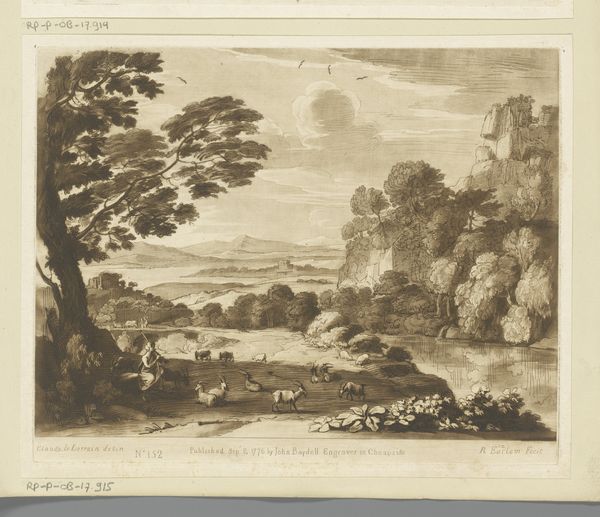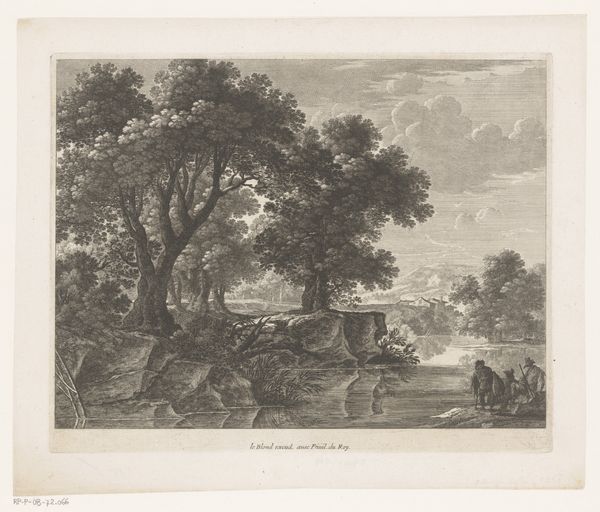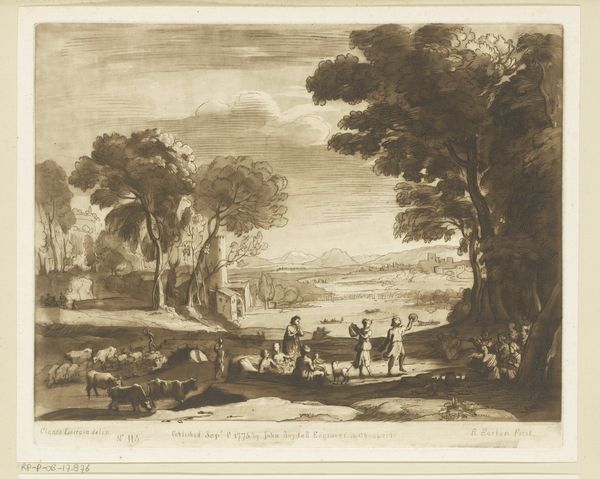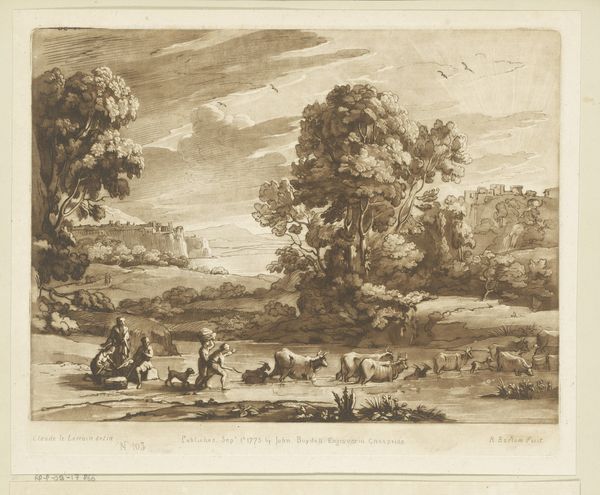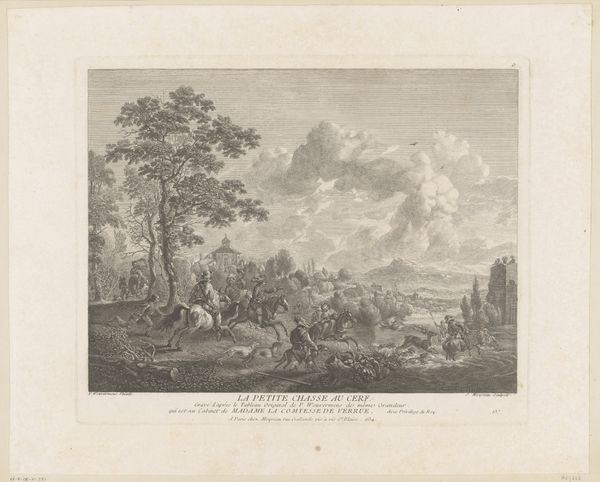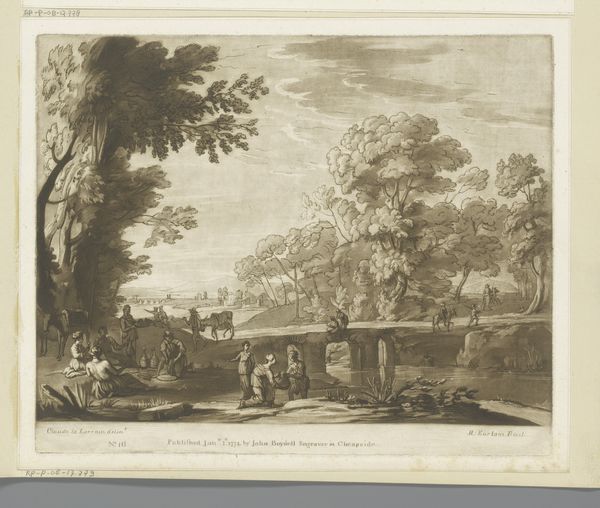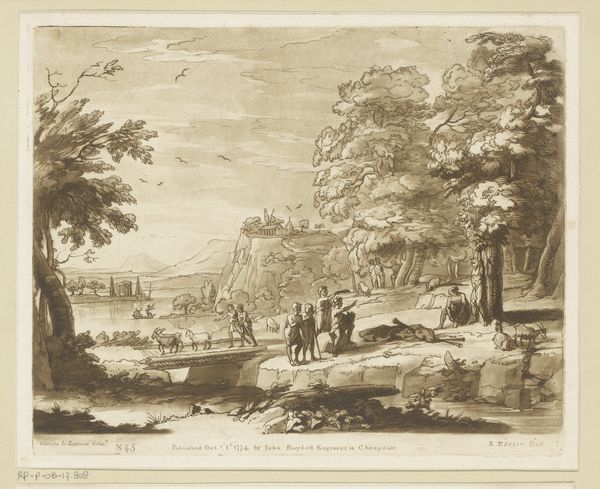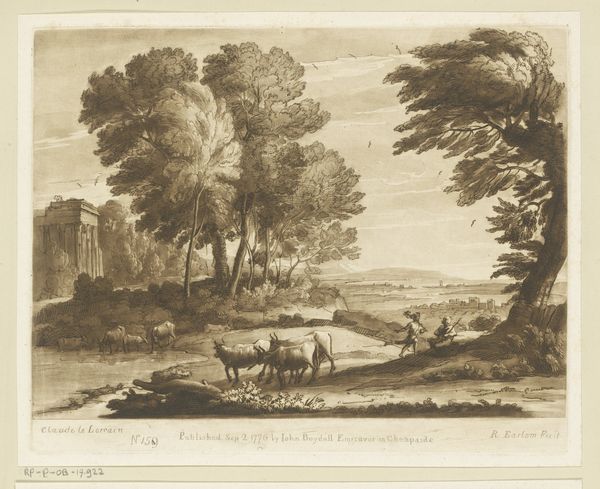
etching, plein-air, engraving
#
tree
#
aged paper
#
parchment
#
etching
#
plein-air
#
landscape
#
figuration
#
framed image
#
engraving
Dimensions: height 206 mm, width 255 mm
Copyright: Rijks Museum: Open Domain
Editor: This is “Landscape with large tree and two herders with cattle,” thought to be from 1774, and engraved by Richard Earlom. The way it's been rendered on, what I believe is, aged paper really evokes a rustic sort of mood for me. What captures your attention? Curator: Well, let's consider Earlom's technique here. Etching and engraving, processes inherently tied to mass production. We see a 'landscape,' seemingly idyllic, but produced through industrial methods. The ‘aged paper’ you mention also plays into this—was this intentional, an affectation to increase the work’s perceived value in a burgeoning art market? Think about who the consumers of such images were, what materials would have been available. Editor: I hadn’t really thought of it in those terms. I was so caught up in the sort of romantic view of it all! Curator: Exactly! And that romanticism itself is a product, carefully crafted. The "plein-air" style gives the illusion of spontaneity, yet the printmaking process involves meticulous labor, a stark contrast to the supposed freedom of the pastoral scene. Editor: So you’re saying that this landscape, although it seems really picturesque, is tied to industrial and social production? How would looking at it that way change how someone interprets it? Curator: Precisely! It disrupts the illusion. Instead of a pure, untainted scene, we see evidence of human labor and consumption. What does it mean to replicate nature on paper, to distribute it widely? It demystifies the landscape, transforms it into a commodity, doesn’t it? Editor: It does. I am definitely seeing it in a totally new way now. Thank you! Curator: The material reality reveals the social structures at play, transforming our understanding of this serene image.
Comments
No comments
Be the first to comment and join the conversation on the ultimate creative platform.
